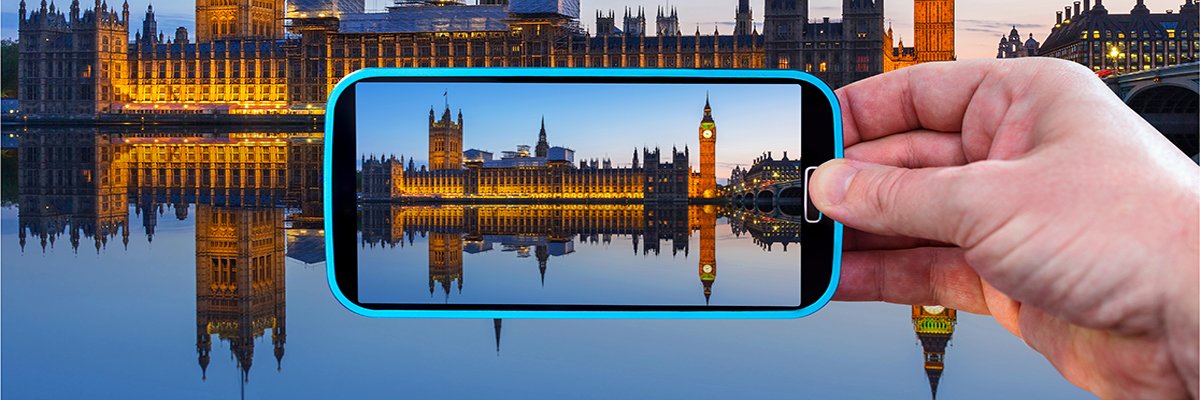Tech News
Labour announces plans to overhaul digital government

The UK government has unveiled extensive plans to revamp the way technology is funded, implemented, and acquired in the public sector to expedite the development of digital services for the benefit of citizens.
The Government Digital Service (GDS) is set to undergo expansion, a new commercial function will be established, and HM Treasury will be “experimenting” with more modern approaches to budgeting for technology introduction and ongoing expenses.
Additionally, several new artificial intelligence (AI) tools will be introduced to assist civil servants in hastening decision-making processes across Whitehall.
“Sluggish technology has impeded our public services for far too long, resulting in significant time and financial costs,” remarked Peter Kyle, the Secretary of State at the Department for Science, Innovation, and Technology (DSIT).
“We will leverage technology to eliminate the inefficient practices prevalent in the public sector, enabling better information sharing and collaboration to better serve the public. We will also streamline the application process for licenses and permits, reducing delays for businesses eager to focus on growth. This is just the beginning.”
GDS is set to be reintegrated with the Central Digital and Data Office (CDDO), which was separated from GDS by the previous Conservative government in 2021. Additionally, two other teams, the Incubator for AI and the Geospatial Commission, will be incorporated into GDS under DSIT’s control following the Labour party’s victory in the 2024 general election.
A new government Chief Digital Officer will be appointed to oversee the digital profession throughout Whitehall. The previous Chief Digital Officer, Mike Potter, departed in September last year amid speculation of GDS and CDDO’s potential reunification under his leadership.
Today, Kyle will launch a new “blueprint for a modern digital government” aiming to achieve £45 billion in productivity savings across the public sector, eliminating outdated and cumbersome processes that have hindered the country’s progress for too long, according to DSIT.
A Digital Commercial Centre of Excellence will be established to revamp the management of the government’s £23 billion annual technology expenditure. This initiative will extend to local authorities, enabling councils to collaborate on contracts to reduce costs and offering more opportunities for tech startups and scaleups to secure government contracts.
The Treasury will be exploring a new budgeting approach that aligns with modern technology trends. While specific details were not provided in the DSIT announcement, it suggests a shift towards agile and iterative budgeting for digital services, departing from traditional upfront expenditures followed by smaller annual maintenance costs. This approach has been advocated by digital government experts for many years.
DSIT will introduce a framework for sourcing and procuring AI solutions to facilitate the rapid execution of small projects and address barriers to scaling AI implementation.
The blueprint will also mandate public bodies to publish application programming interfaces (APIs) to enhance data sharing within the government, a proposal initially put forth in 2011 by government digital advisor Martha Lane Fox.
DSIT is launching a suite of internally developed AI-based tools under the name “Humphrey,” inspired by the fictional civil service chief Sir Humphrey Appleby from the BBC TV series Yes, Minister. These tools include:
- Consult, which analyzes responses to government consultations to provide policymakers with interactive dashboards for exploring public feedback.
- Parlex, which assists civil servants in searching and analyzing Hansard texts from parliamentary debates.
- Minute, a secure AI transcription service for meetings, generating customizable summaries in formats preferred by public servants.
- Redbox, a generative AI tool to aid in daily tasks such as summarizing policies and preparing briefings.
- Lex, which analyzes and summarizes relevant laws.
Other initiatives announced by DSIT include the establishment of a Technical Design Council, a Responsible AI Advisory Panel, and a review of digital expert salaries in the public sector to enhance competitiveness with the private sector.
Last week, Prime Minister Keir Starmer unveiled an AI action plan for the government, outlining new policies and opportunities for leveraging AI to support economic growth and enhance public services.
Further details will be released in conjunction with the Spending Review in the summer, including technology priorities across government and a Digital and AI Roadmap.
“My department will harness AI to accelerate the implementation of our Plan for Change, enhance quality of life, and stimulate growth,” stated Kyle.
Work and Pensions Secretary Liz Kendall added, “Outdated technology is holding us back. Cumbersome manual processes result in delayed assistance for individuals in need. That’s why we aim to leverage cutting-edge AI technologies to modernize Jobcentres, empowering our dedicated staff to deliver personalized services to job seekers.”
These recent announcements follow the release of a study on the state of digital government by DSIT, conducted by external consultants from Bain & Company. The study identified £45 billion in potential savings through improved technology utilization by the government, including £14.5 billion spent on external consultants, a figure estimated to be three times higher than if the tasks were performed by civil servants.
The study also highlighted that a quarter of central government’s IT systems are outdated, resulting in substantial maintenance costs estimated to be three to four times higher than keeping the technology up to date.
An April 2024 report from the Public Accounts Committee of MPs raised concerns about “significant issues with aging IT systems” and urged the government to avoid repeating past mistakes when upgrading legacy IT infrastructure.
The digital blueprint represents the Labour government’s initial major effort to transform technology delivery across the public sector. Under the Conservative government, multiple digital strategies were introduced between 2010 and 2022, each promising to enhance digital public services, address legacy IT challenges, reduce costs, and modernize government practices.
-

 Destination8 months ago
Destination8 months agoSingapore Airlines CEO set to join board of Air India, BA News, BA
-

 Breaking News10 months ago
Breaking News10 months agoCroatia to reintroduce compulsory military draft as regional tensions soar
-

 Gadgets3 months ago
Gadgets3 months agoSupernatural Season 16 Revival News, Cast, Plot and Release Date
-

 Tech News12 months ago
Tech News12 months agoBangladeshi police agents accused of selling citizens’ personal information on Telegram
-

 Productivity11 months ago
Productivity11 months agoHow Your Contact Center Can Become A Customer Engagement Center
-

 Gadgets3 weeks ago
Gadgets3 weeks agoFallout Season 2 Potential Release Date, Cast, Plot and News
-

 Breaking News10 months ago
Breaking News10 months agoBangladesh crisis: Refaat Ahmed sworn in as Bangladesh’s new chief justice
-

 Toys12 months ago
Toys12 months ago15 of the Best Trike & Tricycles Mums Recommend























